Scientists unlock one of the toughest biomaterials and find clues to pollen's expiration date
Scientists at Umeå University have found a way to break open the protective walls of pollen grains – one of the hardest biomaterials in the world – without damaging the inside cell and its components. This achievement opened the possibility to isolate and study mitochondria – parts of the cell essential for energy production. To their surprise, several proteins that are key for maintaining the energy production of the mitochondria, were nowhere to be found.
Published: 2025-02-14 Updated: 2025-02-18, 06:53
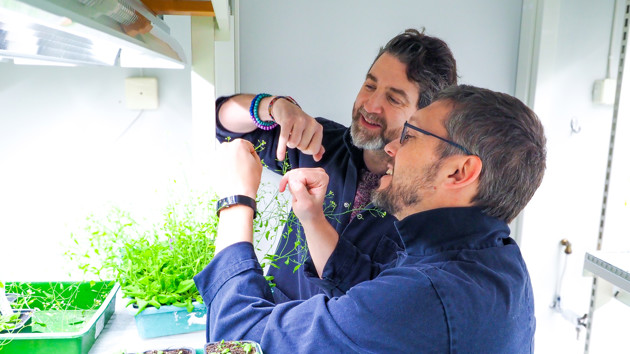
Researchers Olivier Keech and Clément Boussardon at the Department of Plant Physiology, Umeå University, are studying pollen grains from Arabidopsis plants in the Umeå Plant Science Centre's green house.
ImageRebecca ForsbergThis tough outer wall is largely made of one of the most resistant biomaterials known on this planet.
Pollen Grains: Nature's Resilient Capsules
“Flowering plants are dependent on pollen to reproduce, and the pollen grains are very special in many ways,” says Olivier Keech, Associate Professor at the Department of Plant Physiology, Umeå University and group leader at Umeå Plant Science Centre, UPSC.
He explains that each pollen grain contains a tiny capsule, a cell that carries the male genetic material necessary for the next generation of plants.
When a pollen grain encounters a female plant of the same species, fertilization may happen and can give rise to a new generation. But immediate contact is not always a given. To survive harsh environments, pollen grain has developed a specific outer structure that protects the cell, allowing it to travel long distances with the wind or pollinators, such as insects, birds or reptiles.
“This tough outer wall is largely made of one of the most resistant biomaterials known on this planet. This makes the pollen grain wall highly resistant to environmental damage and some pollen grains can remain preserved in sedimentary rocks for millions of years,” says Olivier Keech.
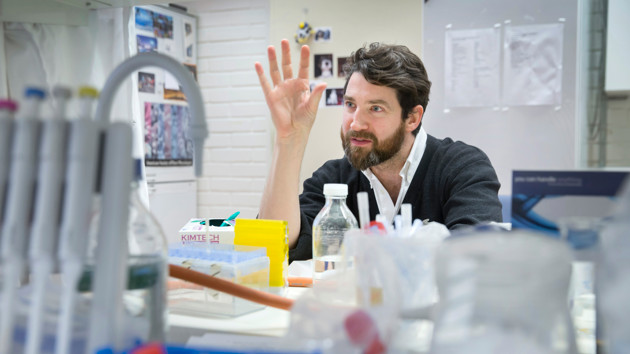
Olivier Keech, Associate Professor at the Department of Plant Physiology and UPSC, Umeå University.
ImageJohan GunséusThat a pollen grain can survive for such long time span is thanks to an in-house energy production – the mitochondria. “It’s a tiny compartment of the cell that is essential for its survival,” says Olivier Keech.
The mitochondria have its own genetic material, essential for its biological activity, and notably for producing the energy that keeps the cell alive. But to study the pollen mitochondria, they had to break open the protective wall.
These are biological structures, a million times smaller than a meter, encapsulated in a tiny safe – dynamite was not an option!
A Surprising Discovery and a Collaborative Success
The idea to study pollen mitochondria germinated at a conference in 2019. Olivier Keech and his colleague at UPSC, Clement Boussardon, presented a new technique developed in Umeå, that enables trapping and isolation of mitochondria. This innovative technique intrigued collaborators who studied pollen cells.
However, from the birth of the idea, it took a few years to reveal the secrets of pollen, quite literally. “Breaking up pollen grains and isolating intact mitochondria was truly challenging. These are biological structures, a million times smaller than a meter, encapsulated in a tiny safe – dynamite was not an option!” says Clement Boussardon, staft scientist in Keech’s group and first author of the study published in Current Biology.
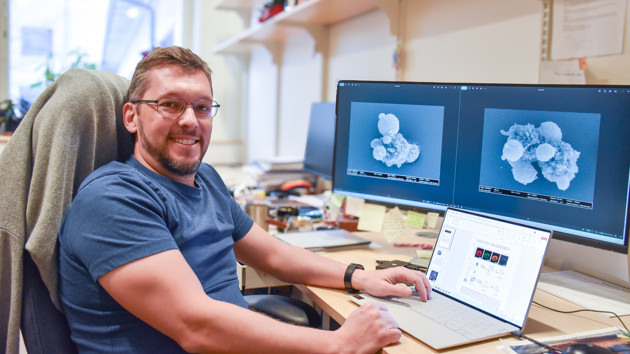
Staff scientist Clément Boussardon at the Department of Plant Physiology, Umeå University, are studying mitochondria from Arabidopsis pollen grains.
ImageRebecca ForsbergClément Boussardon, together with their collaborator Matthieu Simon from INRAE in France, spent over four years perfecting their method to open the pollen grains while preserving the cell. What they discovered, was not what they expected.
“What we found was quite surprising,” says Olivier Keech. “We discovered that the proteins that are associated with maintenance and the expression of the genetic material in mitochondria, essential for keeping it alive, were nowhere to be found.”
“This is a bit like mitochondria were ready to produce energy but were not equipped for any repairs if needed. This discovery may explain why a pollen grain in the end has a limited lifetime, and why it is fine tuned to survive for the duration of its unique mission – fertilization,” says Olivier Keech.
Combining the expertise of our diverse research teams has been a great pleasure and was key to this success
Olivier Keech and Clement Boussardon credit their success to the multidisciplinary nature of the study, which brought together researchers from Germany, France, New Zealand, and of course Umeå.
“Combining the expertise of our diverse research teams has been a great pleasure and was key to this success,” concludes Clement Boussardon.
Arabidopsis – the fruit fly of plants
Arabidopsis are small flowering plants related to cabbage and mustard, or in more scientific terms – they are a genus in the family Brassicaceae. In this genus we find thale cress (Arabidopsis thaliana), a "standard plant" used in plant biology research, and the first plant to have its entire genome sequenced. Changes in thale cress are easily observed, making it a very useful model. It can be considered the fruit fly of plant scientists.
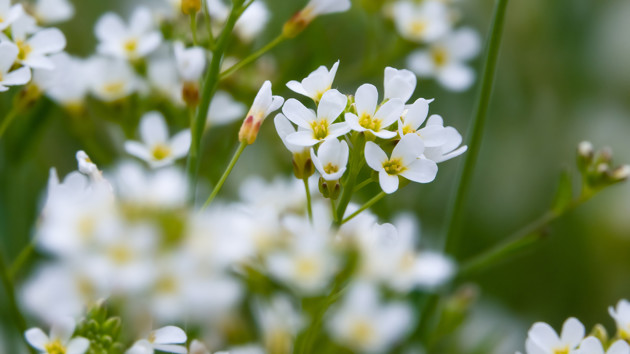
Contact for more information


Umeå Plant Science Centre
UPSC is one of Europe’s strongest research environments for plant biology. Read more on the UPSC website.
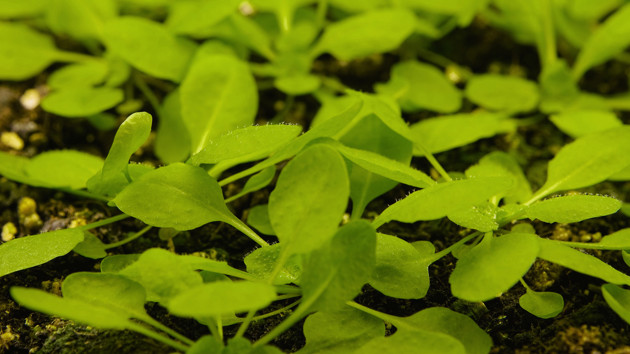
Department of Plant Physiology
Our main activities are academic research in experimental plant biology.

SciLifeLab Site Umeå
SciLifeLab national site at Umeå (UMU and SLU) is a local site of the national SciLifeLab network.